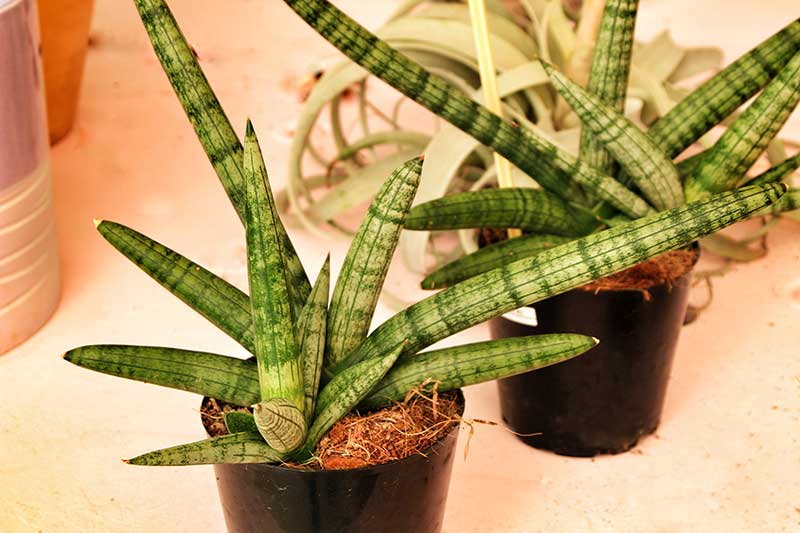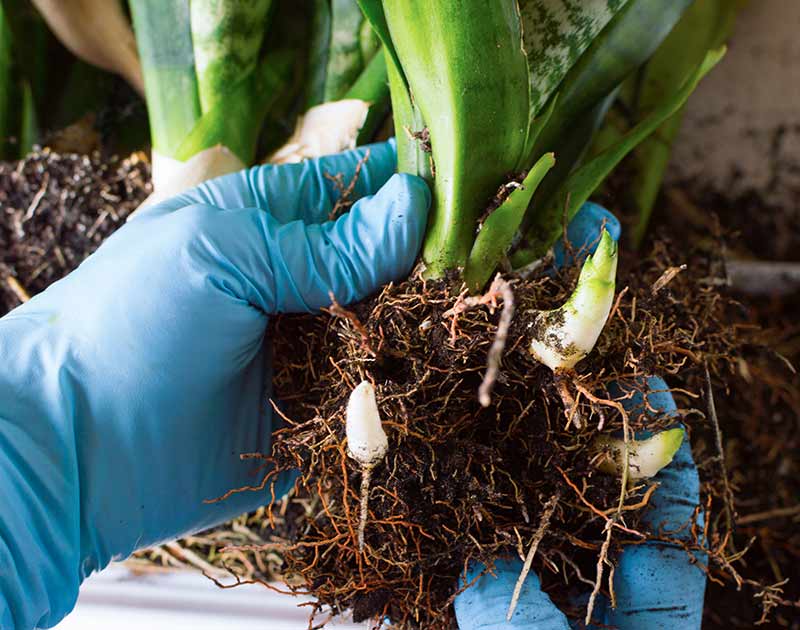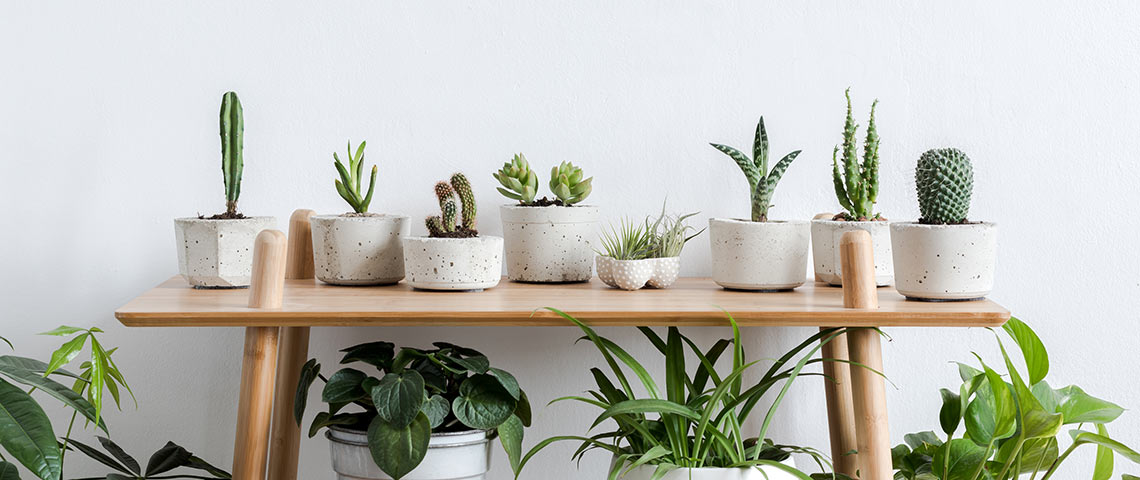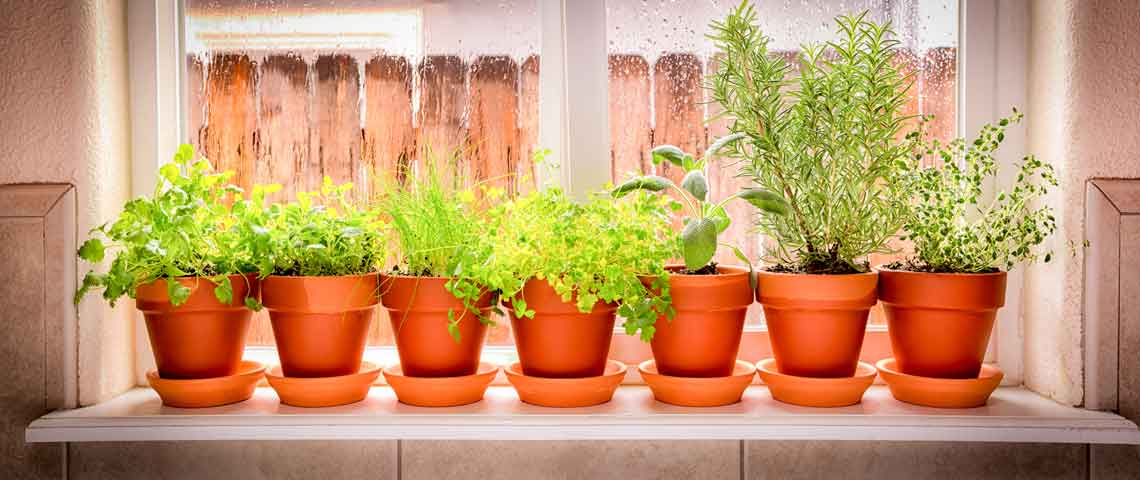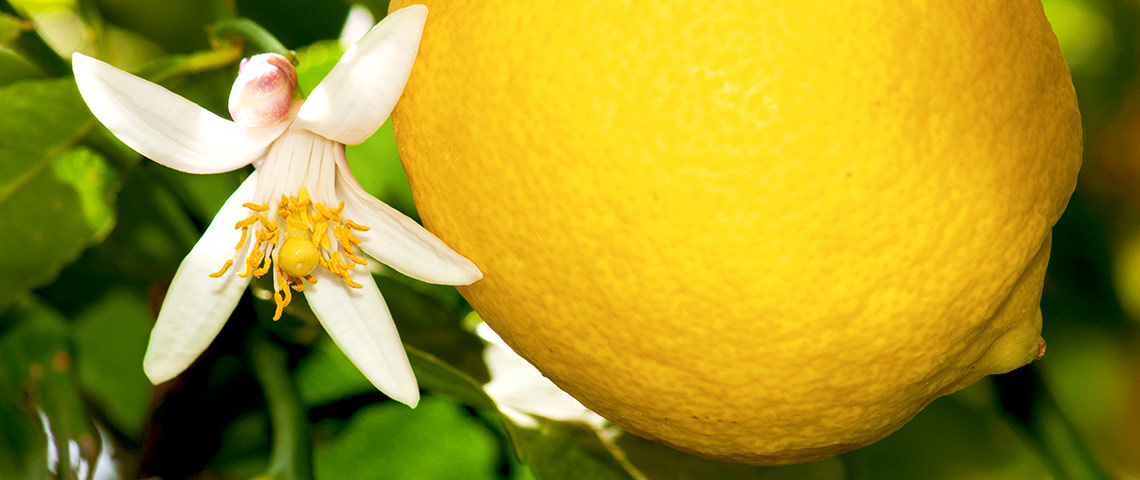How to Grow and Care for Snake Plants Indoors
With their spiky, sculptural leaves and low-key requirements, snake plants are one of the least demanding plants you can grow indoors. They thrive on minimal attention and rarely complain about new locations and conditions in your home. If you're ready to add snake plants to your family, you're destined for success. These simple snake plant basics keep them at their spiky best.
Picking Snake Plants for Indoors
Snake plants are native to arid regions of Africa, where light conditions vary and humidity stays low. If that sounds like your house, you're not alone. A snake plant may be the perfect plant for you to grow.
Until recently, snake plants were known by the botanical name Sansevieria, but scientists reclassified the group. These stylish plants now officially belong to the genus Dracaena. But don't worry, even plant pros still use sansevieria as the plant's common name.
When choosing snake plants for indoors, you have options. Basically, if it fits your space and style, it works. All snake plants have similar needs, so feel free to explore different varieties. Some of the most popular snake plants include these types:
- Common snake plant (Dracaena trifasciata) has erect, sword-like green leaves with horizontal grey-green stripes and sharp leaf tips. If you want a classic snake plant, this is it.
- Variegated snake plant (Dracaena trifasciata "Laurentii") has thick, narrow, mottled green leaves with bright yellow leaf margins. The color contrast is superb.
- Bird's nest snake plant (Dracaena trifasciatia "Hahnii") is a dwarf form that stays fewer than 6 inches tall. The short, spiky leaves form an adorable nest-like rosette — perfect for that spot on your desk.
- Moonshine snake plant (Dracaena trifasciata "Moonshine") is also known as silver snake plant. Its ethereal, pale silver-green leaves clearly inspired this variety's illuminating name.
- Cylindrical snake plant (Dracaena cylindrica) has rounded, cylinder-like leaves rather than flattened, sword-like leaves. If you're into the unusual, this one's for you. (Be ready for people to think it's an aloe.)
As a bonus, snake plant benefits extend beyond architectural beauty and style. NASA and university researchers have shown these plants help filter pollutants from air.
Be aware that snake plants are toxic to dogs and cats. Train your furry family members to stick to their special yard and garden areas, avoid houseplants, and never chew or eat foliage from any plant — indoors or out. If part of a snake plant gets eaten, contact your family vet right away.
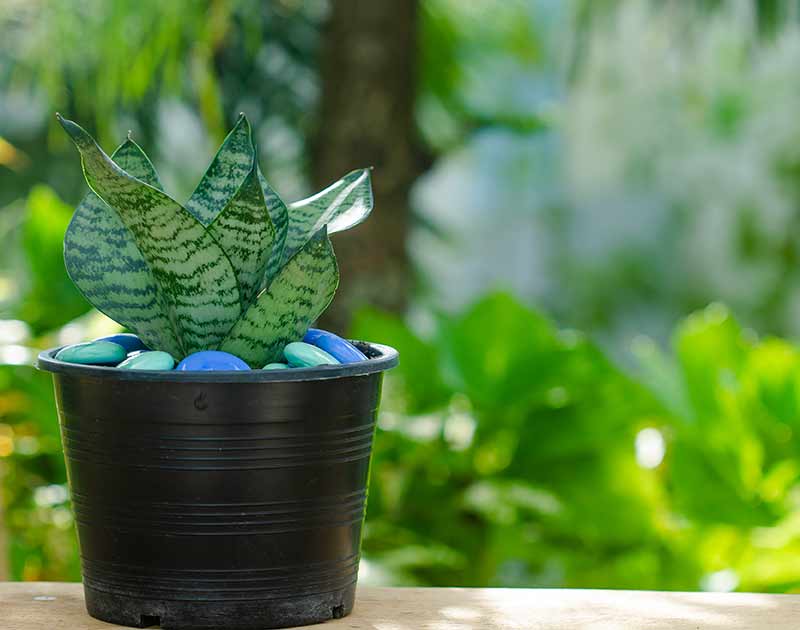
Caring for Your Indoor Snake Plant
Some people say snake plants do best when neglected. That's an exaggeration, but they do flourish with very little care. Keep their arid African roots foremost in mind, and you're halfway there. Always use coarse, well-draining potting soil mix and containers with good drainage holes. Then meet these simple snake plant needs:
- Light – Snake plants are versatile, but avoid light extremes for best results. While they tolerate poor light and prolonged shade, snake plants prefer strong, filtered light. Warm, sunny locations sheltered from direct hot sun are ideal.
- Water – Snake plants are very drought tolerant, so underwatering is rare. But overwatering is a quick route to recover from root rot. During the active summer growing season, water only when the soil feels dry about 3 inches deep. Then water thoroughly. During winter, water snake plants only as needed to keep leaves looking and feeling firm.
- Fertilizer – Snake plants are native to poor rocky soil, and they don't need much fertilizer. The blend of organic and natural ingredients in Pennington Rejuvenate Plant Food All-Purpose 4-4-4 — fed once each spring — give your snake plant the nutrients it needs. Then it keeps gently feeding for up to four months. Along with essential nutrients, you'll get earthworm castings, beneficial microorganisms and humic acids to help improve soil and nutrient uptake by your plants.
- Repotting – Snake plants are slow growers that rarely need repotting. When your container overflows with leaves or roots peek out from drainage holes, it's time to repot. With Pennington Rejuvenate Premium All Purpose Potting Soil Mix, you can give your snaky babies the best soil for indoor and outdoor potted plants. This earth-friendly mix revitalizes soil with essential plant nutrients, bio-stimulants, earthworm castings and sustainably sourced peat to create a living soil environment, even indoors.
- Propagating – Repotting is the perfect time to start new snake plants. Division is the easiest way to propagate. Remove the pot from your plant. Then gently pull the plant roots apart to divide the root ball into as many sections as you'd like. Then plant the individual rooted rosettes, and you have new plants to nurture or share with friends.
Troubleshooting Snake Plants
If your snake plants aren't doing as well as you'd like, don't worry. Snake plants are tough and resilient, but don't let them suffer too long. Many common snake plant problems respond to a quick and simple fix:
- Yellow snake plant leaves signal overwatering. Let your plant dry out thoroughly — completely dry — and get your watering and yellow plant leaves back on track. Remove any dead or soggy leaves around the base.
- Snake plant root rot reveals itself as soft, mushy, discolored leaves. Yellow-white roots are healthy; dark smelly roots are not. To try again, divide the plant. Discard all the stinky parts and the old soil. Then replant leaves with firm, healthy roots in fresh new potting soil mix.
- Brown snake plant tips can signal several things, from improper watering to sunburn or exposure to cold. Go through your plant care checklist, step by step, to find where you're off and why leaf tips are brown. Then make corrections right away.
- Splayed snake plant leaves aren't always bad. When leaves splay or lean out of the pot, your snake plant may need repotting or more light. If your container is packed to the edge, divide and conquer. If leaves are collapsing, advanced root rot may be to blame. Take a long, close look at the roots, and act accordingly.
Discolored or damaged snake plant tips on healthy, firm leaves can be trimmed. Use sharp plant shears and follow the leaf shape carefully to keep a natural look. Just know that snake plant leaves stop growing when tips are broken or cut. If you prefer, cut the damaged leaf back to the soil and wait for a new leaf to come up.
At Pennington, we've been helping yard and garden lovers learn and grow since 1945. We're here to help you create gardens that only you can imagine, indoors and out. Have a question? We'd love to hear it and stay in touch. Let us help you nurture your roots.
Always read product labels thoroughly and follow instructions.


